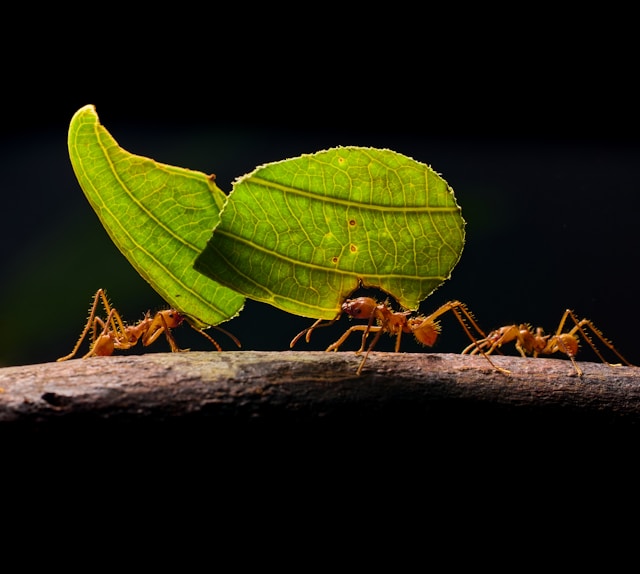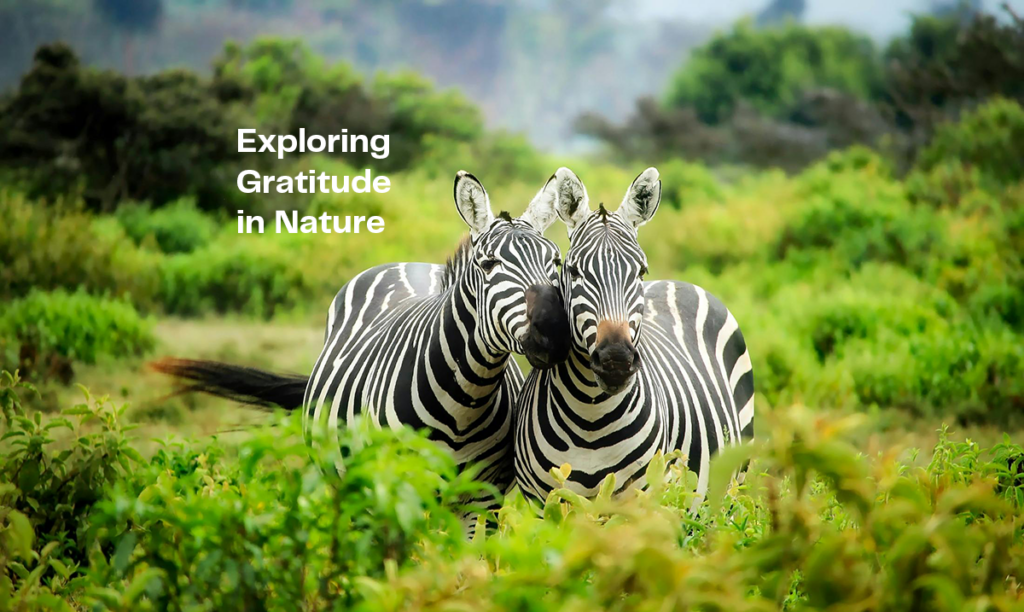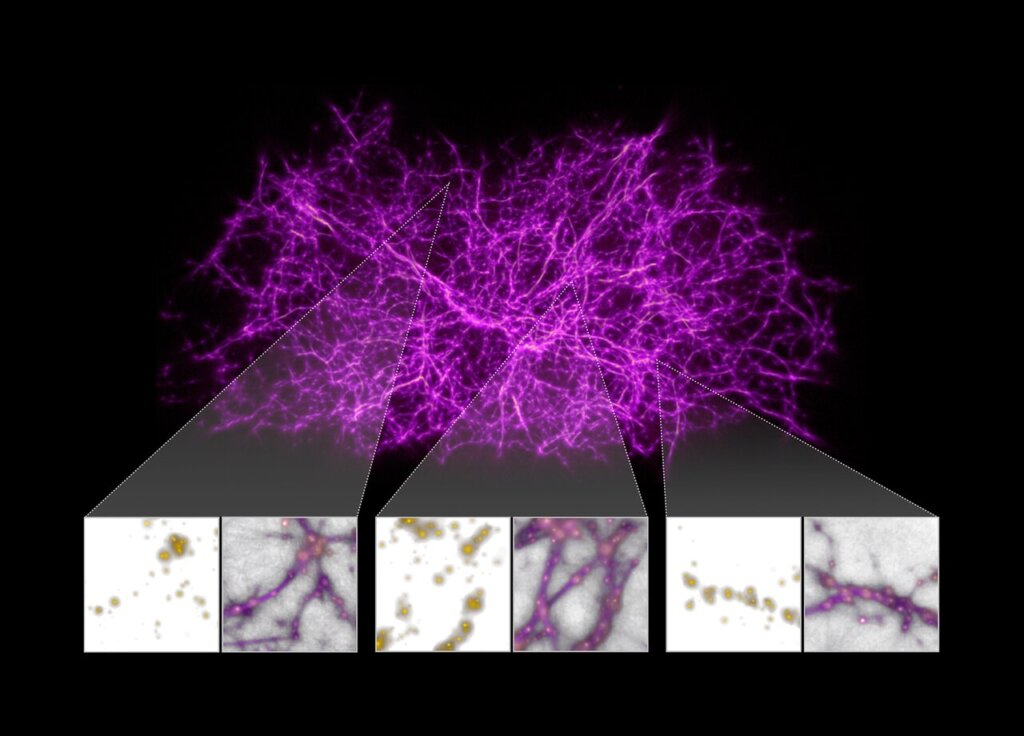
It’s been a consultant for NASA, shot at by police and mistaken for an alien. How slime mold–a brainless, single-celled organism–mapped the dark universe, keeps challenging the top minds to rethink what intelligence even is and has an ability to fill us with wonder beyond the human kind.
A single cell guided the world’s top scientists through another universe and its only limitations were our own.
It seems impossible, but it’s not: Slime mold is taking the world on a journey from the yellow splotch in the backyard to the neurons in our brain to galaxies light years away.
When we think of mapping the dark cosmos, most would look to the pros: NASA, ESA, CNES, the Hubble Space Telescope. So why are they turning to slime mold for answers? And how on Earth is a single cell, without a brain, living in a Petri dish, tracing the universe?
Before we dive in, important note: If slime mold never contributed to any technology, they are and will always be an essential part of our mysteriously interconnected world and have an inherent right to be here. With biomimicry, we zoom in on their unique gift of hyper-efficiency and without any poking or prodding, their innate genius is plucked out and leveraged into bio-inspired innovations that benefit all life. In this case, their special skills are transferred to us in the form of an algorithm that can trace parts of the dark cosmos.
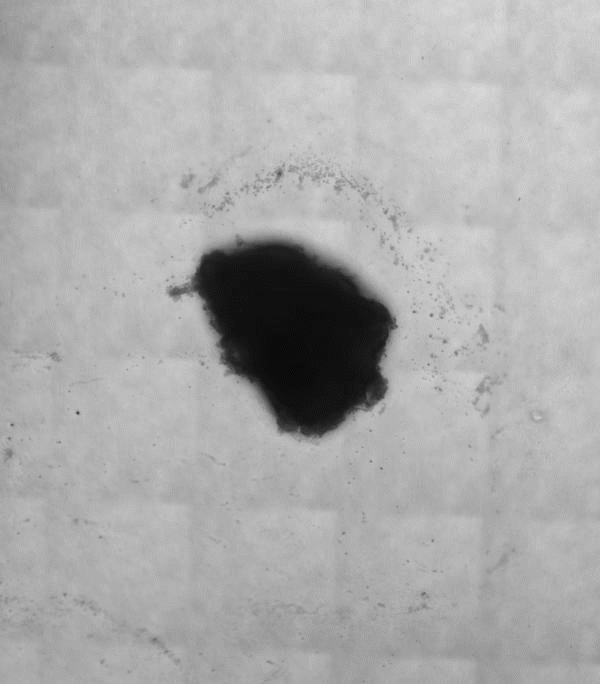
The extent of their cosmic clarity isn’t even known yet.
This is important because while scientists and academics may have an overview, the dark cosmos is a challenging and deeply beautiful mystery to unravel. With slime mold, space agencies have a lively, tiny tool that enables them to see more of the most magnificent parts of our universe we wouldn’t see without them.
For any non-astrophysicists out there, a helpful background: At the time of writing, 4% of the universe can be seen (stars, planets, galaxies, gas, voids). What is called dark is the unknown–the stuff astronomers can’t see, grasp or at times even make sense of. The dark cosmos is a mixture of gas, dark matter, galaxies, and galaxy clusters, and these filamentary structures help form the backbone that holds the universe together. The connections are roughly 500 light-years long from Earth–very hard to see and even more difficult to trace and map out. In an attempt to see more of the unseen, post-doctoral researchers including Oskar Elek and Joe Burchett at UC Santa Cruz went through data across the positions of 37,000 (!) galaxies from the Sloan Digital Sky Survey and created a model of the invisible parts of the sky (like the gasses and dark matter) modeled with an elegant computer algorithm. The algorithm’s source? Slime mold!

Image credit: ESA/Gaia/DPAC; Acknowledgements: Maja Jablonksa, Andrzej Krupka, Lukasz Wyrzykowski (University of Warsaw)
While they seem to have nothing in common, they do. Both the slime mold’s path to food and the cosmic web’s structural path are the most direct paths possible.
Similar to how the slime mold maps the most direct path to food, they were able to reconstruct that feeding data and replicate that algorithmic model with the cosmic web by using the porridge oats as the location of the galaxies. (Seems relevant to note that the experiment ended due to our constraints–not slime mold’s limitations. At a certain point they needed more space to do their thing.)
The one-celled blob’s paths helped clarify the dark cosmos’ structure on the largest scale in history. Their predictions were translated, compared and validated with data from 350 quasars from the Hubble Space Telescope. This is a big deal. As published in Astrophysical Journal Letters, this is the first conclusive association between the diffuse gas in the space between galaxies and the large-scale structure of the cosmic web predicted by cosmological theory.

“Blob” scores a seat in space and helps us grasp microgravity
While most of slime mold’s contributions to our understanding of the cosmos are landlocked (even petri-dish locked!), four specimens scored seats to the International Space Station (ISS). “Blob” became an unlikely and very fun guest when they hitched a ride to the ISS as part of a class project led by France’s space agency and astronaut Thomas Pesquet. Blob was sent into orbit in a customized “Blob box” for the experiment. As the astronauts conducted experiments at the ISS, back on Earth 2,000 specimens from the same strain were distributed to classroom kids aged 10-18 taking school experiments up a notch!
The goal was for Blob to help them study ideas like microgravity and weightlessness with their own experimental slime mold by comparing data on the ground and in orbit. One of the discoveries: slime molds can move upward in 3 dimensions in space, which is what one did before it went back to sleep. This had never been witnessed before on Earth because of gravity.
This is Part 7 of our 8-edition blog series on slime mold by guest writer Katie Losey. She answers your top questions on this fascinating organism and dives into how a brainless, single cell is capable of shaping our futures and blowing our minds. Read the final post of the series, “Can Brainless Life Have Answers That We Don’t” here.
Main Image: Map of the Cosmic Web generated from Slime Mould Algorithm | Image credits: ESA/Hubble
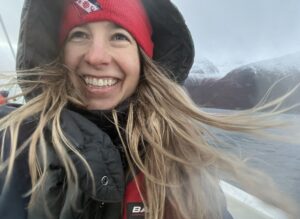
About the author
Katie Losey is committed to bridging the gap between humans, nature’s genius, overlooked wonder and breakthrough innovations. She is the Head of Partnerships & Conservation at Natural World Safaris and has worked at the intersection of business and conservation for over two decades. Her experiences in the field reveal the possibilities of nature-inspired innovations from locking eyes with gorillas in Rwanda and swimming alongside orcas in Norway to being outweighed by monarch butterflies in sacred fir forests of Mexico! Katie has been a member of The Explorers Club since 2015 and serves on their Public Lecture, Film and World Oceans Week Committees. She has been guest writing for the Biomimicry Institute since 2019, and her science writing has been featured in courses at the U of Cambridge, Johns Hopkins U, and on the cover story of the U of Richmond Magazine (her alma mater). She lives in NYC. Connect with Katie on Instagram and LinkedIn.


